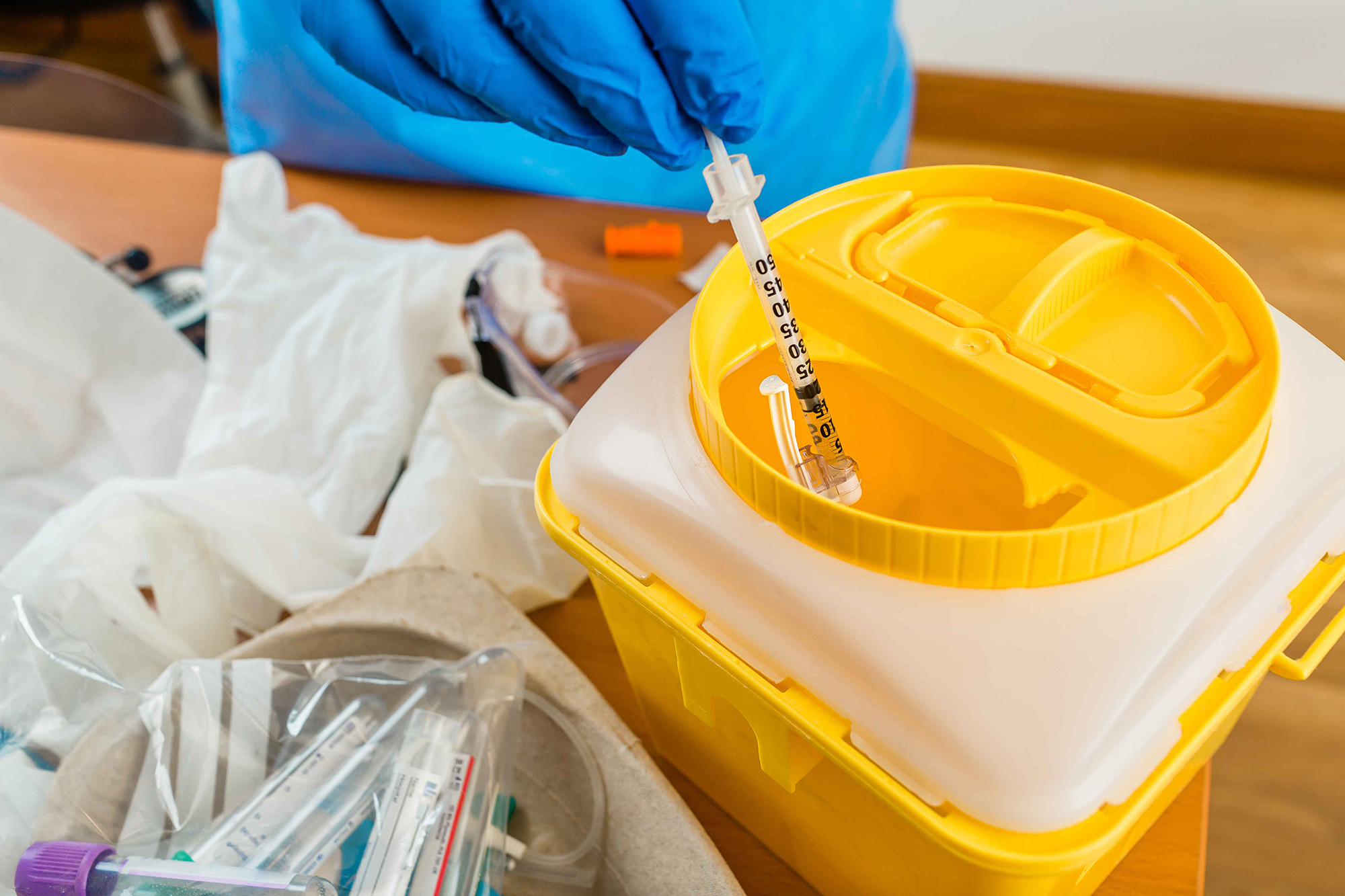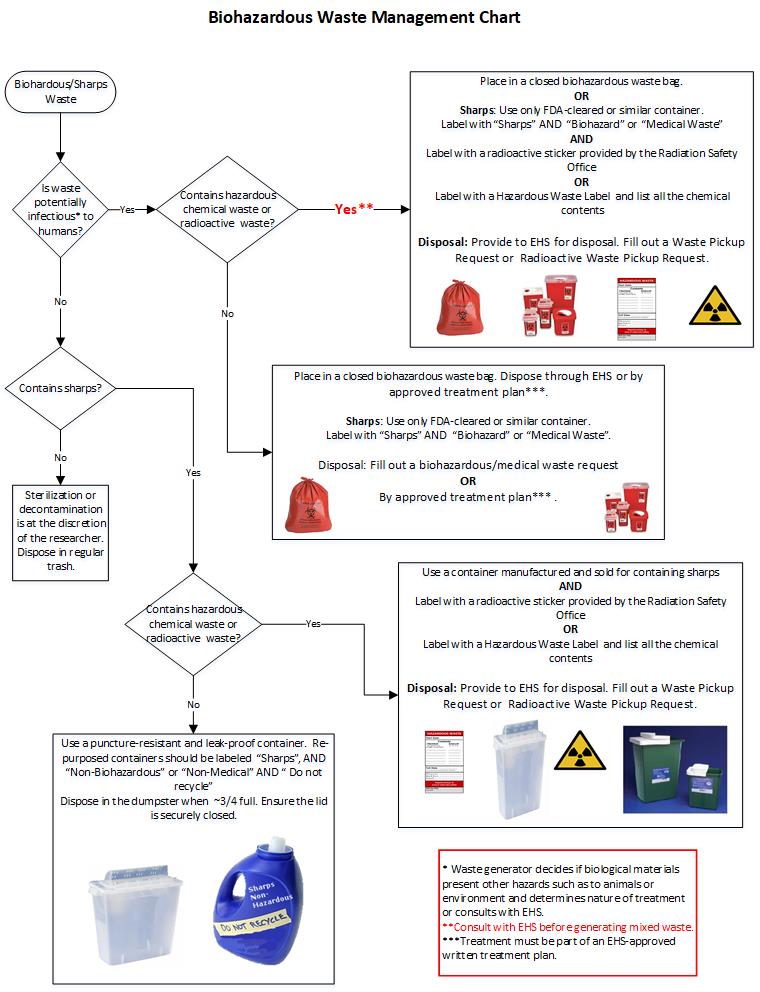Best Practices for Medical Waste Management
Clinical waste administration is a vital aspect of medical care facilities' operations to make sure the safety and security of people, personnel, and the setting. Implementing finest techniques in medical waste management is important to decrease the risks related to hazardous waste. This consists of correct segregation and categorization of waste, ensuring its risk-free storage and labeling, adhering to regulative standards, and making use of reliable disposal approaches. By following these best practices, healthcare facilities can decrease the capacity for infections, injuries, and pollution caused by incorrect handling and disposal of medical waste. This introduction aims to provide a summary of the value of finest methods for medical waste administration and the succeeding areas will look into each practice thoroughly - medical waste removal.

Segregation and Categorization
In the field of medical waste monitoring, proper segregation and classification are important practices for ensuring the secure and effective disposal of healthcare-related materials. Clinical waste is produced from numerous sources, consisting of healthcare facilities, centers, research laboratories, and other healthcare centers. It consists of a wide variety of things, such as needles, syringes, bandages, handwear covers, and pharmaceutical waste.
Segregation entails the systematic separation of different kinds of medical waste based upon their qualities and potential dangers. This procedure helps to stop cross-contamination and makes sure that each kind of waste is managed suitably. As an example, sharps waste, such as blades and needles, ought to be positioned in puncture-resistant containers to avoid injuries and the spread of transmittable diseases. Similarly, contagious waste, such as blood-soaked plasters or societies, should be segregated and dealt with independently to decrease the danger of spreading out microorganisms.
Categorization is the process of identifying medical waste into different classifications based on its prospective dangers. These classifications might include contagious waste, harmful waste, pharmaceutical waste, and basic waste. By categorizing waste, health care facilities can identify the suitable disposal techniques and guarantee compliance with local policies and guidelines.
Correct partition and classification of medical waste not only protect the health and wellness of medical care employees and the public however also add to the total performance and efficiency of waste administration. It reduces the threat of accidents, reduces ecological effects, and advertises responsible garbage disposal techniques.
Correct Storage Space and Identifying
To guarantee the reliable and safe disposal of clinical waste, health care facilities have to follow proper storage space and labeling methods. WasteX Medical Waste Disposal. Correct storage and labeling play an important duty in preserving the honesty of medical waste monitoring systems and safeguarding the health and wellness of healthcare employees, patients, and the basic public
When it comes to storage, it is important to have marked areas particularly made for different sorts of clinical waste. These areas need to be protected, well-ventilated, and outfitted with suitable containers that satisfy governing standards (medical waste disposal). Partition and classification of waste should likewise be considered to avoid cross-contamination and prospective dangers

Normal surveillance and assessment of storage locations and containers are important to identify any kind of problems or violations. Staff needs to be educated on proper storage space and labeling techniques, highlighting the significance of conformity with laws and procedures.
Safe Transportation and Handling
Making sure the protected and proper transport and handling of medical waste is essential for keeping the stability of waste monitoring systems and securing the health and wellness of all included. Clinical waste, which includes things polluted with contagious products, pharmaceuticals, and other harmful compounds, have to be delivered in a manner that protects against leaks, spills, and prospective contamination.
To achieve risk-free transport and handling, a number of ideal practices must be followed. First, it is important to utilize puncture-resistant and watertight containers that are particularly made for medical waste. These containers should be correctly secured and classified to stop any type of unintended exposure or mishandling. In addition, waste needs to be segregated based on its nature and type to stop cross-contamination.
Throughout transport, it is vital to ensure that waste containers are securely fastened and stored in a steady way. Cars utilized for moving clinical waste needs to be outfitted with appropriate safety features, such as spill containment systems, to reduce the danger of any spills or leaks. Motorists ought to receive training on proper handling and emergency situation feedback treatments to properly resolve any kind of unpredicted occurrences.
Moreover, the transportation and handling of medical waste should adhere to all relevant policies and guidelines established forth by regional, state, and federal authorities. WasteX Medical Waste Disposal. medical waste disposal. Regular examinations and audits must be conducted to analyze compliance and identify any type of areas for renovation
Compliance With Regulatory Standards
Preserving conformity with governing standards is necessary for efficient clinical waste administration. These standards are put in area to safeguard public wellness and the atmosphere by making certain that medical waste is effectively dealt with, dealt with, and disposed of. Compliance with regulative standards helps to protect against the spread of infectious illness, minimize prospective threats, and decrease the total impact of medical waste on the atmosphere.
To attain compliance, medical care facilities should remain educated about the particular policies controling clinical waste management in their jurisdiction. These laws might vary from country to country, and even within various states or regions. It is very important for medical care facilities to have an extensive understanding of these standards and to apply appropriate techniques and procedures to make certain conformity.
One key aspect of compliance is the proper segregation and labeling of different kinds of medical waste. This includes separating sharps from other waste, in addition to categorizing waste based on its prospective dangers. Health care facilities need to likewise make sure that clinical waste is saved in ideal containers which these containers are effectively classified and secured.
In addition, conformity with governing standards calls for health care facilities to establish proper training and education programs for employee entailed in clinical waste administration. This includes providing training on waste segregation, taking care of, and disposal treatments, in addition to the appropriate use personal safety devices.
Routine monitoring and audits are also vital to make certain recurring conformity with regulatory standards. This entails conducting normal examinations of waste storage areas, recording waste administration procedures, and keeping records of waste disposal.
Reliable Disposal Approaches
Medical click here to find out more care facilities must use efficient disposal methods for correct administration of clinical waste. Incorrect disposal of medical waste can present major wellness and environmental threats. There are a number of methods that can be utilized to effectively deal with clinical waste, guaranteeing the safety and security of health care employees, clients, and the public.
One typically made use of approach is incineration. Burners can safely melt medical waste at high temperature levels, reducing the quantity and damaging any type of possibly hazardous virus. Incineration can be expensive and might release damaging pollutants into the air if not effectively regulated.
An additional technique is autoclaving, which entails subjecting the waste to high-pressure steam. This procedure kills germs, viruses, and other microorganisms, providing the waste secure for disposal in regular waste streams. Autoclaving is a efficient and eco-friendly approach, but it needs customized equipment and skilled employees.
Chemical disinfection is likewise made use of in some cases, where liquid chemicals are related to the waste to decontaminate it. This method is less frequently made use of due to issues regarding the performance of chemical sanitation and the potential for chemical residues to pollute the atmosphere.
Along with these approaches, healthcare centers ought to likewise carry out correct partition, packaging, and labeling of medical waste to ensure its risk-free handling and disposal. Routine training and education of personnel on appropriate waste monitoring techniques are essential to maintaining effective disposal techniques.
Final Thought
In final thought, executing finest methods for medical waste administration is vital for making certain the safety and security of medical care employees, individuals, and the setting. By appropriately setting apart and classifying waste, storing and classifying it appropriately, making certain secure transport and handling, abiding by regulative standards, and using efficient disposal methods, health care facilities can efficiently handle and lessen the threats linked with clinical waste. It is vital for health care organizations to adhere and prioritize to these ideal methods to preserve a safe and lasting medical care atmosphere.
Medical waste monitoring is an essential facet of healthcare centers' procedures to guarantee the safety and security of individuals, staff, and the setting. Carrying out best techniques in medical waste monitoring is necessary to reduce the threats connected with unsafe waste. These categories might include transmittable waste, hazardous waste, pharmaceutical waste, and basic waste.In conclusion, applying best techniques for medical waste administration is important for making certain the security of medical care workers, individuals, and the environment. By appropriately classifying and segregating waste, keeping and classifying it correctly, making sure secure transportation and handling, conforming with governing guidelines, and utilizing reliable disposal methods, health care centers can properly manage and lessen the dangers connected with medical waste.